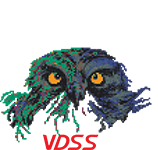VDSS monitors important or sensitive data in real time and alerts when this data is being accessed in potentially inappropriate ways. For example VDSS can signal when a user, who has no rights, nevertheless accesses the data. Ransomware, compressing your files will be quarantined immediately by VDSS.
VDSS has been developed by the company Triangle Solutions, a fully independent Dutch software company. In addition to VDSS, Triangle Solutions has also developed TSMS, IT monitoring. VDSS/TSMS is a client server application with experience in large organizations for over 20 years, with many clients on 1 server.
Many of these larger customers perform standard Security Scans. Company resources such as equipment, networks, data, software and processes are mapped in Security Scans. A risk analysis is performed for each company resource. TSMS/VDSS are regularly included in these tests as part of the monitoring.
With the feedback and advices, we take the appropriate actions. This has ensured, among other things, that the current VDSS meets strict safety measures.
VDSS does not have a so-called “build-in backdoor” account or access to your system without your knowledge.
TCP/IP Connections
Outgoing connection: VDSS Agents are installed on the production systems,
which then can be monitored/controlled. Only when needed, the VDSS Agent
contacts the VDSS Server directly, using the TCP/IP protocol. By default, port
2345 is used, deviant settings can be set when installing the VDSS software. If desired, you can further secure this connection yourself, for example through a VPN connection.
Incoming connection: The VDSS Server can also connect to the VDSS Agent, but this is not necessary and can be switched off. This connection is made via the VDSS Sysinfo functionality. By default, port 2346 is used, also this port can be adjusted when installing the VDSS software.
E-mail agent: In addition, there are also more and more environments where no TCP/IP connection is allowed anymore, not only for incoming traffic, but also outgoing traffic. In that case, VDSS can provide an email Agent, which will send the encrypted TCP/IP packets via a mail connection to the VDSS Server. This is available on request and is not standard in the current version of VDSS.
For years, we have been providing solutions for monitoring in hospitals, where MRI systems are located in a “closed” environment. These systems are monitored with an email Agent.
Protocols and Encryption
Security by Design: The VDSS Server and Agents communicate via same
standards, a protocol is used developed in-house by Triangle Solutions.
This set of rules and procedures is necessary for communication between
the VDSS Server and the Agents.
This VDSS protocol consists of commands, to understand each other, but in addition, data also crosses the line. The data sent over the line by VDSS contains as little sensitive data as possible and is kept as small as possible. Building the concept, this was taken into account and only significant information is sent over the network.
Security: Sniffing, for example, checks out the data from the line and show the protocol. To prevent this, the following security features are built in.
- Handshaking protocol: checks the data using control signals between the VDSS Server and Agent and improves the messaging between the systems.
- Encryption: VDSS uses the rule of two for encrypting their data between VDSS Server and Agents. The Rule of Two is a data security principle of the NSA’s Commercial Solutions for Classified Program (CSfC). It specifies two completely independent layers of cryptography to protect data. VDSS first of all uses AES, an official encryption standard specified by the National Institute of Standards and Technology (NIST). AES encryption is used worldwide by many different organizations, for instance governments, banks and developers of security software Each VDSS Agent sends a Diffie-Hellman Key after installation to the VDSS server for its first time login. This means that each connection is encrypted differently. In addition, VDSS adds an extra layer of encryption on top. This provides extra security when a leak is found in AES.


VDSS Agent
Rights: A VDSS Agent is installed on your system to monitor the data.
This agent has the following rights:
- To quarantine processes that attack the sensitive data (like ransomware attacks or other unwanted actions on your data files).
- Create/remove rules in the firewall.
- To watch along with the OS.
Performance: The VDSS Agent takes on average 40 MB of disk space and is installed separately from your system in its own directory. The CPU load of a VDSS agent is approximately 1 to 2% and will use an average of 30 MB of memory. The moment the Agent detects a ransomware attack, the Agent will go into High Alert state and the CPU load will increase up to 5 to 10%.
